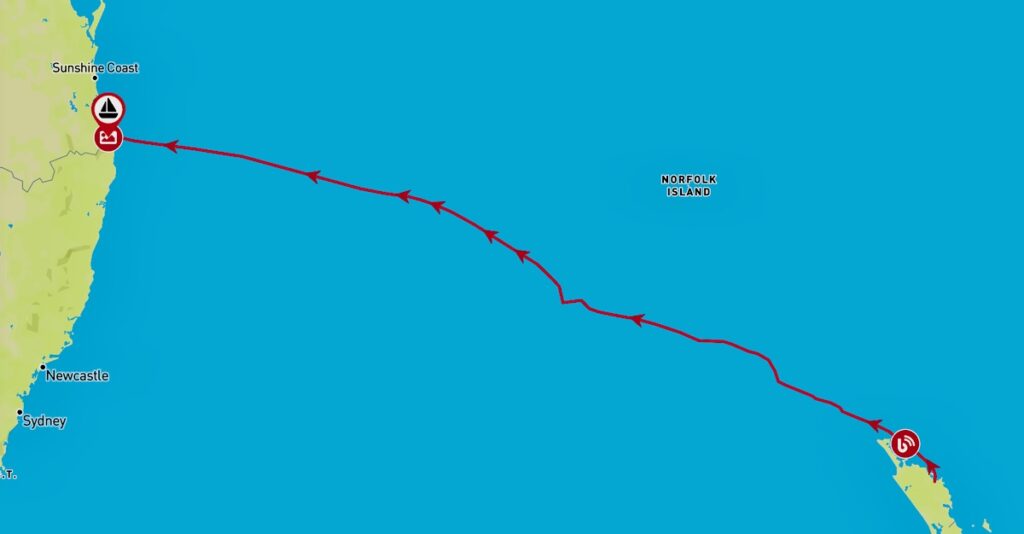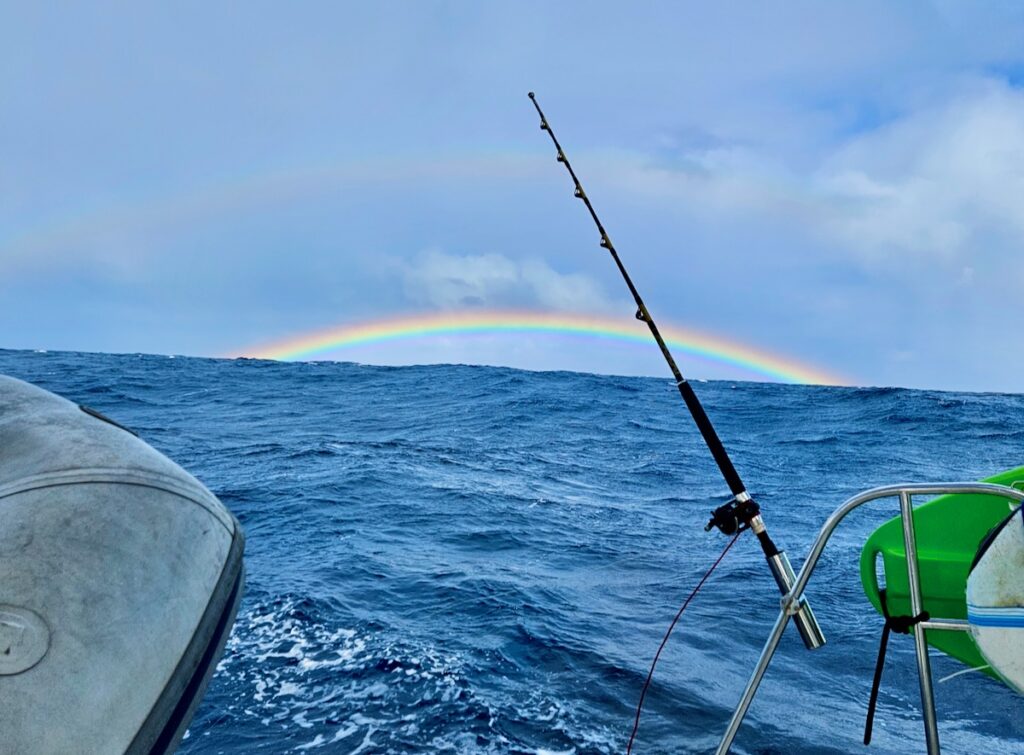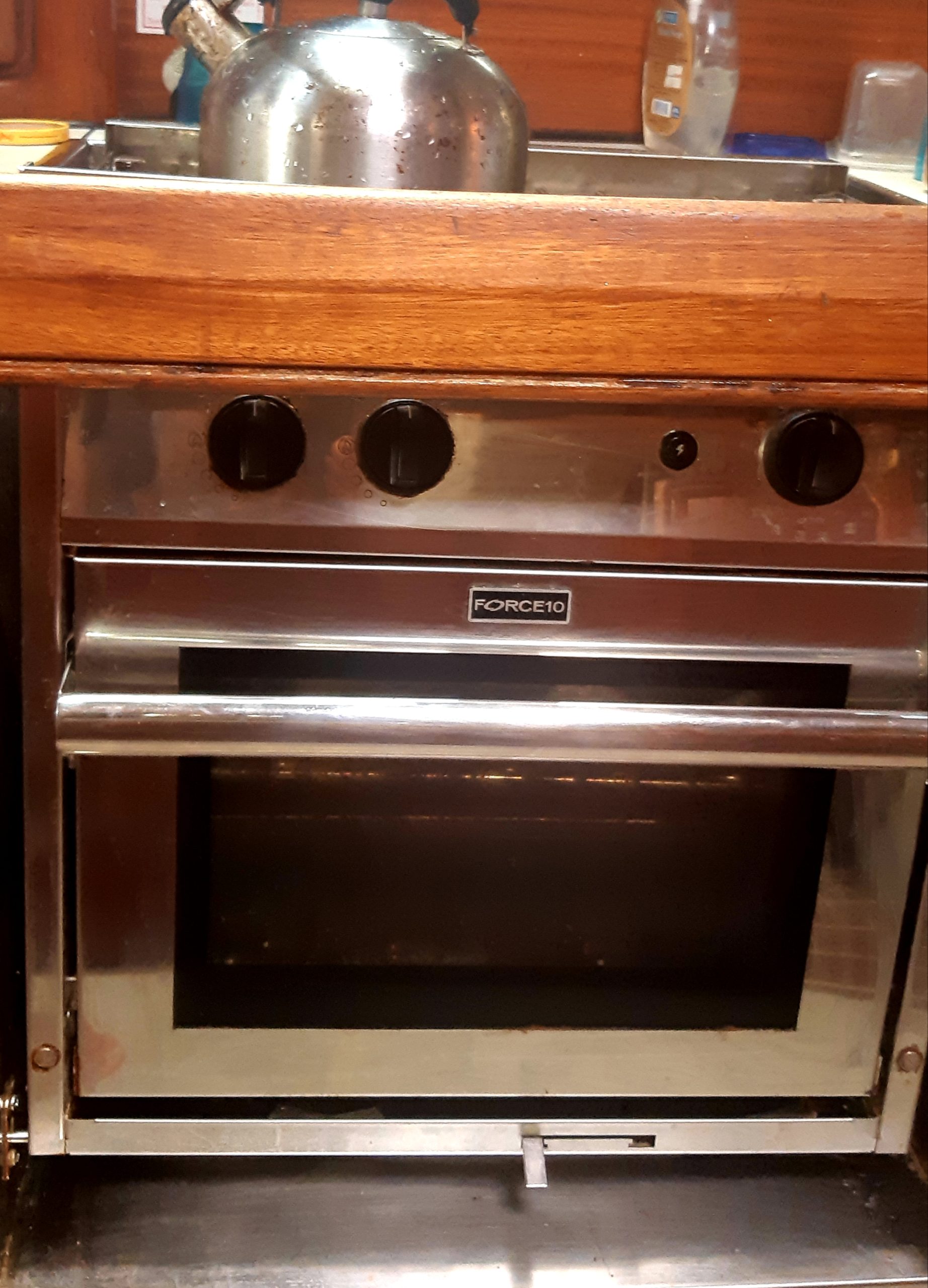I am still recovering from the sail from New Zealand to Australia. It was one of our longest passages and a challenging trip. The good news is we made it, and are now basking in the warm sun in Australia!
The Route from New Zealand to Australia
Our sail from New Zealand to Australia covered over 1200 nautical miles. We departed from Bay of Islands Marina in Opua, New Zealand aiming for Southport Yacht Club in Gold Coast, Australia.

Our route took us from the Pacific Ocean north up the east coast of New Zealand and then west along the north of New Zealand into the Tasman Sea to Australia. The Tasman Sea, known as “The Ditch” in sailing circles, is infamously rough due to the currents of the Southern Ocean colliding with those of the Pacific. So yes, we expected rough wind and waves and that’s what we got.
Rough Seas
From the first day until near the end of our passage, the waves were like a washing machine. Also known as confused seas, the waves came from every direction. To make it even more uncomfortable, there was no break between waves. The incessant confused waves made me sick a few times the first night and next morning, and I continued to feel sick for a couple more days. It wasn’t until late on the third day that I felt human enough to spend time inside the boat and to eat anything besides crackers.






